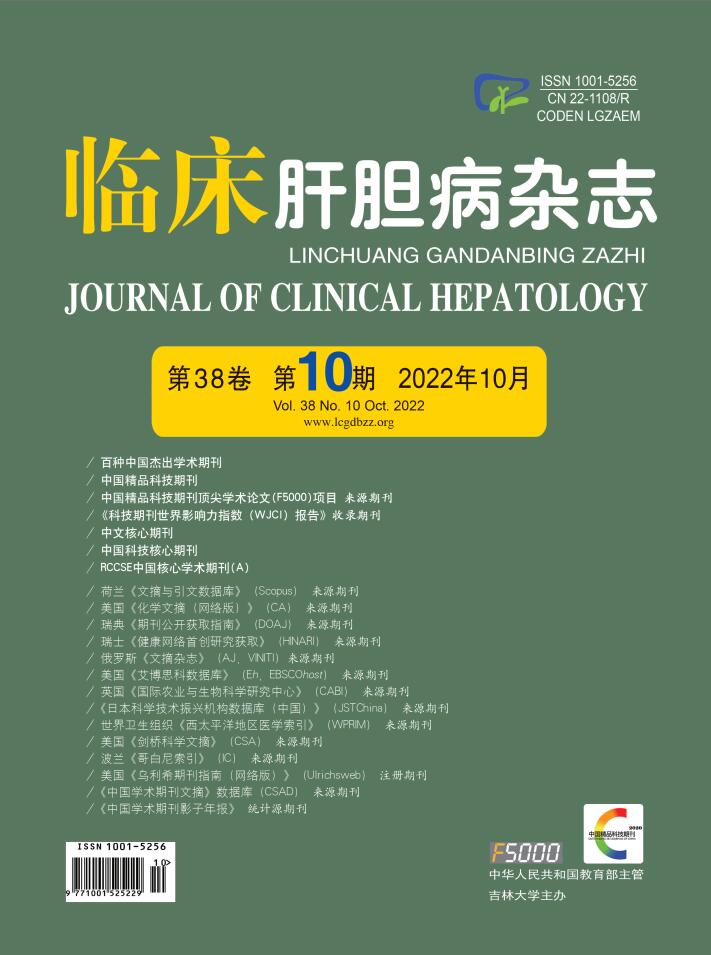| [1] |
SIEGEL RL, MILLER KD, FUCHS HE, et al. Cancer statistics, 2021[J]. CA Cancer J Clin, 2021, 71(1): 7-33. DOI: 10.3322/caac.21654. |
| [2] |
CHEN X, YI B, LIU Z, et al. Global, regional and national burden of pancreatic cancer, 1990 to 2017: Results from the Global Burden of Disease Study 2017[J]. Pancreatology, 2020, 20(3): 462-469. DOI: 10.1016/j.pan.2020.02.011. |
| [3] |
ZHANG QH, NI QX, Coordination Group of The Committee on Pancreatic Cancer. Clinical analysis of 2340 cases of pancreatic cancer[J]. Natl Med J China, 2004, 84(3): 214-218. DOI: 10.3760/j:issn:0376-2491.2004.03.010. |
| [4] |
GROOT VP, DAAMEN LA, HAGENDOORN J, et al. Current strategies for detection and treatment of recurrence of pancreatic ductal adenocarcinoma after resection: A nationwide survey[J]. Pancreas, 2017, 46(9): e73-e75. DOI: 10.1097/MPA.0000000000000899. |
| [5] |
NEOPTOLEMOS JP, PALMER DH, GHANEH P, et al. Comparison of adjuvant gemcitabine and capecitabine with gemcitabine monotherapy in patients with resected pancreatic cancer (ESPAC-4): a multicentre, open-label, randomised, phase 3 trial[J]. Lancet, 2017, 389(10073): 1011-1024. DOI: 10.1016/S0140-6736(16)32409-6. |
| [6] |
CONROY T, HAMMEL P, HEBBAR M, et al. FOLFIRINOX or gemcitabine as adjuvant therapy for pancreatic cancer[J]. N Engl J Med, 2018, 379(25): 2395-2406. DOI: 10.1056/NEJMoa1809775. |
| [7] |
GROOT VP, GEMENETZIS G, BLAIR AB, et al. Defining and predicting early recurrence in 957 patients with resected pancreatic ductal adenocarcinoma[J]. Ann Surg, 2019, 269(6): 1154-1162. DOI: 10.1097/SLA.0000000000002734. |
| [8] |
TEMPERO MA, MALAFA MP, AL-HAWARY M, et al. Pancreatic adenocarcinoma, Version 2.2021, NCCN Clinical Practice Guidelines in oncology[J]. J Natl Compr Canc Netw, 2021, 19(4): 439-457. DOI: 10.6004/jnccn.2021.0017. |
| [9] |
Chinese Pancreatic Surgery Association, Chinese Society of Surgery, Chinese Medical Association. Guidelines for the diagnosis and treatment of pancreatic cancer in China (2021)[J]. Chin J Pract Surg, 2021, 41(7): 725-738. DOI: 10.19538/j.cjps.issn1005-2208.2021.07.02. |
| [10] |
SUR YK, KIM YC, KIM JK, et al. Comparison of ultrasound-guided core needle biopsy and endoscopic ultrasound-guided fine-needle aspiration for solid pancreatic lesions[J]. J Ultrasound Med, 2015, 34(12): 2163-2169. DOI: 10.7863/ultra.14.11030. |
| [11] |
SOHN TA, YEO CJ, CAMERON JL, et al. Resected adenocarcinoma of the pancreas-616 patients: results, outcomes, and prognostic indicators[J]. J Gastrointest Surg, 2000, 4(6): 567-579. DOI: 10.1016/s1091-255x(00)80105-5. |
| [12] |
WAGNER M, REDAELLI C, LIETZ M, et al. Curative resection is the single most important factor determining outcome in patients with pancreatic adenocarcinoma[J]. Br J Surg, 2004, 91(5): 586-594. DOI: 10.1002/bjs.4484. |
| [13] |
HAENO H, GONEN M, DAVIS MB, et al. Computational modeling of pancreatic cancer reveals kinetics of metastasis suggesting optimum treatment strategies[J]. Cell, 2012, 148(1-2): 362-375. DOI: 10.1016/j.cell.2011.11.060. |
| [14] |
ZHENG MH, SHAO CH. Evaluation of neoadjuvant chemotherapy for pancreatic cancer and timing of surgery[J/CD]. Chin J Hepat Surg: Electronic Edition, 2020, 9(5): 418-420. DOI: 10.3877/cma.j.issn.2095-3232.2020.05.005. |
| [15] |
|
| [16] |
KURAHARA H, MAEMURA K, MATAKI Y, et al. A Therapeutic strategy for resectable pancreatic cancer based on risk factors of early recurrence[J]. Pancreas, 2018, 47(6): 753-758. DOI: 10.1097/MPA.0000000000001066. |
| [17] |
IMAMURA M, NAGAYAMA M, KYUNO D, et al. Perioperative predictors of early recurrence for resectable and borderline-resectable pancreatic cancer[J]. Cancers (Basel), 2021, 13(10): 2285. DOI: 10.3390/cancers13102285. |
| [18] |
HANK T, HINZ U, REINER T, et al. A pretreatment prognostic score to stratify survival in pancreatic cancer[J]. Ann Surg, 2021. DOI: 10.1097/SLA.0000000000004845. [Online ahead of print] |
| [19] |
KIM DW, LEE SS, KIM SO, et al. Estimating recurrence after upfront surgery in patients with resectable pancreatic ductal adenocarcinoma by using pancreatic CT: Development and validation of a risk score[J]. Radiology, 2020, 296(3): 541-551. DOI: 10.1148/radiol.2020200281. |
| [20] |
OKABAYASHI T, SHIMA Y, SUMIYOSHI T, et al. A novel physiobiological parameter-based grading system for resectable pancreatic cancer[J]. Ann Surg Oncol, 2018, 25(7): 1889-1895. DOI: 10.1245/s10434-018-6485-7. |
| [21] |
HOSHIMOTO S, HISHINUMA S, SHIRAKAWA H, et al. Validation and clinical usefulness of pre- and postoperative systemic inflammatory parameters as prognostic markers in patients with potentially resectable pancreatic cancer[J]. Pancreatology, 2020, 20(2): 239-246. DOI: 10.1016/j.pan.2019.12.004. |
| [22] |
YAMADA S, FUJII T, YABUSAKI N, et al. Clinical implication of infammation-based prognostic score in pancreatic cancer: Glasgow prognostic score is the most reliable parameter[J]. Medicine (Baltimore), 2016, 95(18): e3582. DOI: 10.1097/MD.0000000000003582. |
| [23] |
LIU Z, JIN K, GUO M, et al. Prognostic value of the CRP/Alb ratio, a novel inflammation-based score in pancreatic cancer[J]. Ann Surg Oncol, 2017, 24(2): 561-568. DOI: 10.1245/s10434-016-5579-3. |
| [24] |
KANDA M, FUJII T, KODERA Y, et al. Nutritional predictors of postoperative outcome in pancreatic cancer[J]. Br J Surg, 2011, 98(2): 268-274. DOI: 10.1002/bjs.7305. |
| [25] |
STOTZ M, GERGER A, EISNER F, et al. Increased neutrophil-lymphocyte ratio is a poor prognostic factor in patients with primary operable and inoperable pancreatic cancer[J]. Br J Cancer, 2013, 109(2): 416-421. DOI: 10.1038/bjc.2013.332. |
| [26] |
BHATTI I, PEACOCK O, LLOYD G, et al. Preoperative hematologic markers as independent predictors of prognosis in resected pancreatic ductal adenocarcinoma: neutrophil-lymphocyte versus platelet-lymphocyte ratio[J]. Am J Surg, 2010, 200(2): 197-203. DOI: 10.1016/j.amjsurg.2009.08.041. |
| [27] |
CHENG Y, LI LX, ZENG WB. Prediction of combination detection of serum CEA, CA19-9 and CA50 levels for surgical resectability of pancreatic cancer[J]. Clin Misdiagn Misther, 2020, 33(1): 84-87. DOI: 10.3969/j.issn.1002-3429.2020.01.020. |
| [28] |
LUO G, LIU C, GUO M, et al. Potential biomarkers in lewis negative patients with pancreatic cancer[J]. Ann Surg, 2017, 265(4): 800-805. DOI: 10.1097/SLA.0000000000001741. |
| [29] |
LIU L, XU H, WANG W, et al. A preoperative serum signature of CEA +/CA125 +/CA19-9≥1000 U/mL indicates poor outcome to pancreatectomy for pancreatic cancer[J]. Int J Cancer, 2015, 136(9): 2216-2227. DOI: 10.1002/ijc.29242. |
| [30] |
VYAS SJ, PURI YS, JOHN BJ, et al. Radiological tumor density and lymph node size correlate with survival in resectable adenocarcinoma of the pancreatic head: A retrospective cohort study[J]. J Cancer Res Ther, 2016, 12(1): 417-421. DOI: 10.4103/0973-1482.171358. |
| [31] |
STRIJKER M, van der SIJDE F, SUKER M, et al. Preoperative serum ADAM12 levels as a stromal marker for overall survival and benefit of adjuvant therapy in patients with resected pancreatic and periampullary cancer[J]. HPB (Oxford), 2021, 23(12): 1886-1896. DOI: 10.1016/j.hpb.2021.05.001. |
| [32] |
Early Diagnosis and Treatment Group, the Oncology Committee of Chinese Medical Association. Expert consensus of Oncology Committee of Chinese Medical Association in early diagnosis and treatment of pancreatic cancer[J]. J Clin Hepatol, 2020, 36(12): 2675-2680. DOI: 10.3969/j.issn.1001-5256.2020.12.008. |
| [33] |
HISADA Y, MACKMAN N. Cancer-associated pathways and biomarkers of venous thrombosis[J]. Blood, 2017, 130(13): 1499-1506. DOI: 10.1182/blood-2017-03-743211. |
| [34] |
SGOUROS J, MARAVEYAS A. Excess premature (3-month) mortality in advanced pancreatic cancer could be related to fatal vascular thromboembolic events. A hypothesis based on a systematic review of phase III chemotherapy studies in advanced pancreatic cancer[J]. Acta Oncol, 2008, 47(3): 337-346. DOI: 10.1080/02841860701687267. |
| [35] |
CAO J, FU Z, GAO L, et al. Evaluation of serum D-dimer, fibrinogen, and CA19-9 for postoperative monitoring and survival prediction in resectable pancreatic carcinoma[J]. World J Surg Oncol, 2017, 15(1): 48. DOI: 10.1186/s12957-017-1104-9. |
| [36] |
ARAKAWA Y, MIYAZAKI K, YOSHIKAWA M, et al. Value of the fibrinogen-platelet ratio in patients with resectable pancreatic cancer[J]. J Med Invest, 2021, 68(3.4): 342-346. DOI: 10.2152/jmi.68.342. |
| [37] |
DREYER SB, PINESE M, JAMIESON NB, et al. Precision oncology in surgery: Patient selection for operable pancreatic cancer[J]. Ann Surg, 2020, 272(2): 366-376. DOI: 10.1097/SLA.0000000000003143. |








 本站查看
本站查看






 DownLoad:
DownLoad: